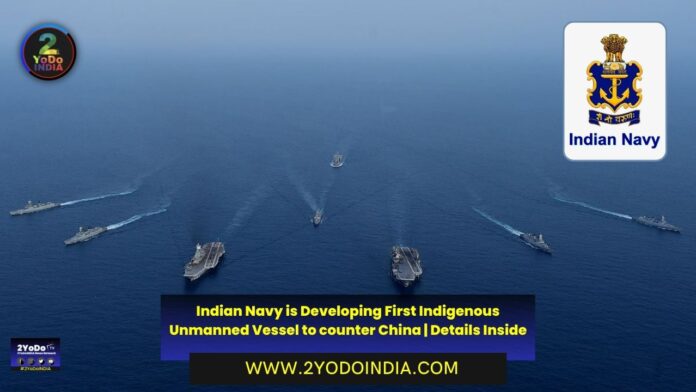Chinese military shocked the world by launching Zhu Hai Yun in January, the first seaborne drone-carrier, with a capability to operate independently. The unmanned carrier or warship can be control remotely and can navigate on its own in open water.
The presence of such unmanned vessels in the Indian Ocean Region (IOR) is bound to increase the security risks for India.
Now the indigenous Autonomous Fast Interceptor Boat (A-FIB), which the Indian Navy will put through sea trials after the monsoon season.
Official sources said the trials were schedule to be held by May but got delay due to bad weather and rough seas.
The A-FIB has been jointly develop by the Indian Navy’s Weapons and Electronics Systems Engineering Establishment and Bharat Electronics Limited, and built at the Goa Shipyard.
This vessel, which has multiple navigation modes, is design for a variety of missions, such as intelligence gathering, surveillance and reconnaissance, mine clearing and even combat.
The Indian Navy has proactively keeping itself abreast with the latest warfare technologies to be able to counter the growing influence of China’s PLA Navy.
One of the focus areas has ‘unmanned’ vessels.
The Indian Navy’s wish list includes remotely operated crewless vessels, unmanned underwater vessels and autonomous unmanned vehicles.
The objective for now is to use these platforms for monitoring or surveillance, at the same time being future-ready for military operations
Indian Navy chief Admiral Karambir Singh had list ‘underwater domain awareness’ as one of the most critical areas for the navy, while citing the discovery of ‘Chinese-origin’ autonomous underwater gliders in the Indonesian waters as an indication of the advancement in technology in 2021.
He saod that the complexity of modern warfare meant that technologies like Artificial Intelligence would be essential for effective use of underwater systems.
Vice Admiral G. Ashok Kumar, then vice-chief of the Indian Navy, came up with a details roadmap for unmanned platforms.
It was share with the industry in terms of what was need, when, how many and at what cost.
Vice Admiral Kumar is now India’s first national maritime security coordinator, reporting to the national security advisor.
Indian Navy planners believe the advantages of unmanned or autonomous capabilities are well understood, such as reduce deployment of manpower, lower risk to personnel and cheaper operating costs, besides greater range, speed and accuracy of data processing—all of this enabling faster decisions.
Indian Navy experts say that by developing and deploying advance unmanned vessels in the Navy and Coast Guard, India will be positioning itself as a leader in maritime security in the IOR.
As per Indian Navy expert :
“The use of unmanned surface vessels in the Indian Ocean not only enhances India’s maritime security but also strengthens its position as a regional power,”
India’s unmanned surface vessels are quickly emerging as the future of maritime security in the IOR.
With the recent geopolitical changes in the region, the need for advance technology and strategic partnerships has become increasingly important to safeguard Indian waters.
Unmanned vessels, equip with state-of-the-art technology, can operate in remote and harsh environments, providing real-time intelligence, surveillance and reconnaissance.
The unmanned surface vehicles market was estimate to be Rs 6,300 crore in 2022 and project to reach Rs 9,818 crore by 2027, at a CAGR (compound annual growth rate) of 11.1 per cent for the period.
Experts said the market was driven by innovation.
Single hulls were easier to manufacture and could be modified from manned to unmanned surface vehicles.
This single segment was project to register the highest CAGR of 15.9% during the 2022-27 period.
To counter the growing Chinese presence in IOR, the Indian Navy needs to be more vigilant while taking coordinate steps to improve its surveillance.





